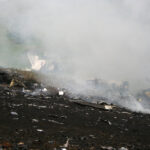Five people have died and 26 others have been hospitalized in Louisiana from an outbreak of flesh-eating bacteria, representing more than double the cases reported in the state last year, according to the Louisiana Department of Health. The Department confirmed the fifth death on September 16, 2025, as the coastal state continues to see a higher number of Vibrio cases and deaths than are typically reported.
All 26 patients diagnosed with vibriosis, an illness caused by the flesh-eating bacteria Vibrio vulnificus, have required hospitalization. In 2024, there were 10 people sickened by Vibrio and one death during the same time period. Health officials indicated that 24 of the 26 patients had at least one underlying health condition, though authorities emphasized that anyone can contract a Vibrio infection.
The bacteria thrive in saltwater and brackish water, which is a mixture of salt and fresh water. According to the Centers for Disease Control and Prevention, most people become infected after eating raw or undercooked shellfish, particularly oysters, because the bacteria can concentrate inside the shellfish. Two of the deaths in Louisiana were linked to tainted oysters, but the Department of Health reported that 85 percent of those sickened had wound or seawater exposure.
Vibrio can cause infection if a swimmer has an open cut, scrape, recent tattoo, or piercing when exposed to contaminated water. In mild cases, those infected experience watery diarrhea, stomach cramping, nausea, vomiting, and fever. However, bloodstream and wound infections are far more severe, causing dangerously low blood pressure, skin blisters, and necrotizing fasciitis, commonly known as flesh-eating disease. In severe cases, doctors may need to amputate patients’ limbs to remove dead or infected tissue.
The bacteria naturally live in coastal waters and are found in higher numbers from May to October when ocean temperatures are warmer. Officials noted that approximately half of the 150 to 200 infections reported in the United States each year occur in the Gulf states of Texas, Louisiana, Mississippi, Alabama, and Florida. Louisiana and Florida have recorded the greatest number of cases and deaths since reporting became mandatory in 2007.
Florida has also reported five deaths and 28 cases this year, indicating a broader regional outbreak. During the previous 10 years, Louisiana averaged 10 Vibrio vulnificus cases and one death annually during the same time period. About one in five people die within a day or two of becoming ill from the infection.
People with certain pre-existing conditions face increased risk of severe complications, including those with cancer, liver disease, diabetes, HIV, or the genetic blood disorder thalassemia. Individuals taking immune-suppressing drugs, medicine that reduces stomach acid, and those who have had recent stomach surgery also face higher risks. However, most healthy individuals experience mild disease following exposure.
The Louisiana Department of Health has issued specific precautionary guidance for residents. Health officials advised people to stay out of brackish or salt water if they have wounds, including cuts and scrapes, or to cover wounds with waterproof bandages if contact with brackish water, salt water, raw seafood, or raw seafood juices is possible. Residents are advised not to eat raw shellfish to reduce their risk of infection. The department also recommended that people wear gloves and other protective clothing when handling raw seafood.
The outbreak has prompted increased vigilance among health officials, who continue to monitor the situation closely. The significantly higher number of cases compared to previous years has raised concerns about potential environmental factors contributing to the increased bacterial presence in Gulf Coast waters.
Vibrio bacteria are frequently found in oysters, and infections can occur when people consume raw shellfish containing the bacteria. The bacteria can also invade the bloodstreams of individuals with weakened immune systems, potentially causing fever, chills, skin lesions, and septic shock. In some cases, infection may result in amputation or necrotizing fasciitis, where flesh around an open wound dies. Authorities emphasized the importance of seeking immediate medical attention if skin infections develop after water exposure.
Health officials have not identified the specific individuals who died or provided details about their locations within Louisiana. The investigation into the outbreak continues as authorities work to understand the factors contributing to this year’s significant increase in cases. The Department of Health maintains that while certain populations face higher risks, the general public should remain vigilant when engaging in activities involving coastal waters or consuming raw seafood.











